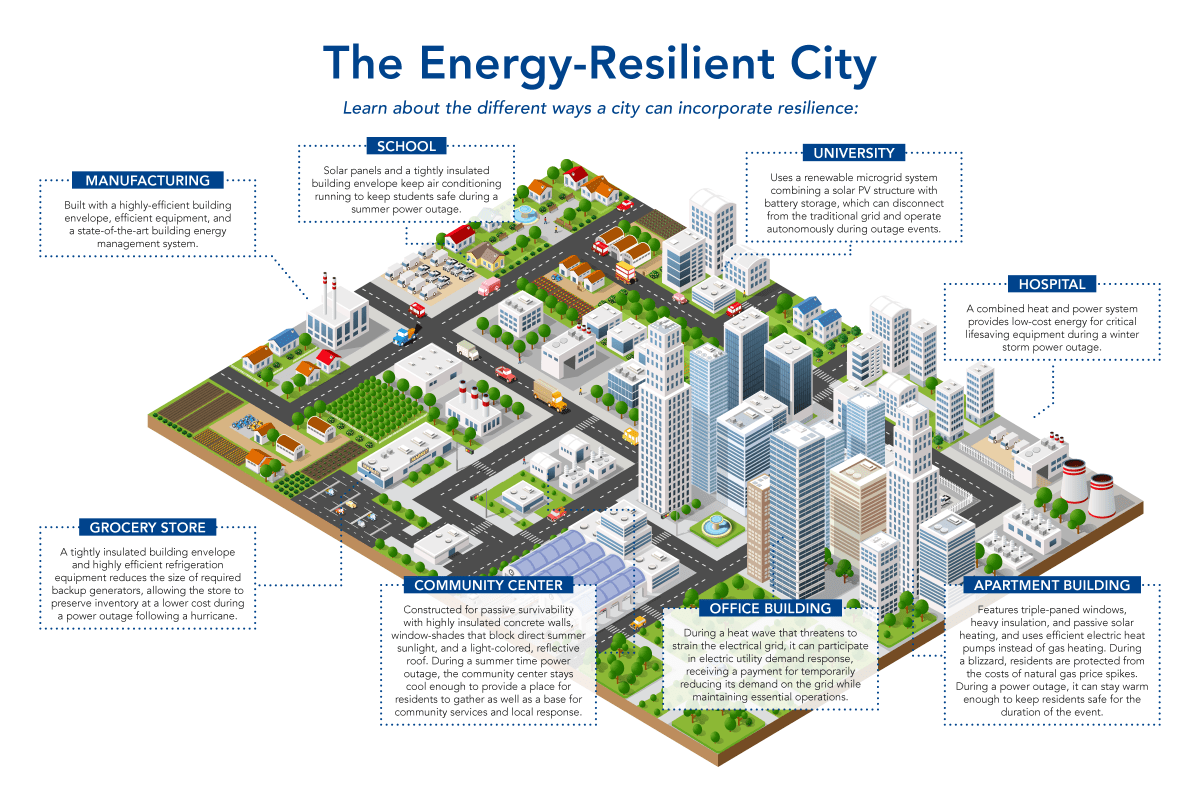Building Resilience In Least Developed Countries: A Pathway To Sustainable Development

Table of Contents
Strengthening Institutional Capacity for Disaster Risk Reduction
Effective disaster risk reduction (DRR) hinges on strong and transparent institutions. Without robust governance, even the best-intentioned development projects can falter.
Improving Governance and Transparency
Good governance and transparent institutions are the bedrock of resilience. Combating corruption and fostering accountability are paramount. This involves strengthening the rule of law, promoting merit-based appointments, and ensuring accessible information for citizens.
- Examples of successful governance reforms: Rwanda's impressive progress in improving governance and transparency, demonstrated through its consistent ranking improvements in global indices, serves as a powerful example. Similar successes have been observed in countries that have prioritized anti-corruption measures and strengthened public financial management systems.
- Promoting participatory decision-making: Involving local communities in decision-making processes ensures that policies and projects are tailored to specific needs and contexts, fostering a sense of ownership and commitment.
- Enhancing accountability: Mechanisms for monitoring and evaluating the performance of government agencies are essential for ensuring accountability and responsiveness to citizens' needs. Independent oversight bodies and active civil society participation play a crucial role in this regard.
Enhancing Early Warning Systems
Effective early warning systems are critical for mitigating the impact of disasters. These systems should provide timely and accurate information about impending hazards, allowing communities to prepare and respond effectively. This includes climate-related hazards like floods and droughts, as well as economic shocks and disease outbreaks.
- Examples of successful early warning systems: Bangladesh's pioneering work in developing and implementing community-based flood forecasting systems has significantly reduced loss of life and property. Similar success stories exist in countries leveraging mobile technology to disseminate early warnings effectively.
- Investments in technology and infrastructure: This includes investing in weather monitoring stations, communication networks, and data analysis capabilities.
- Community-based early warning mechanisms: Engaging local communities in the design and implementation of early warning systems is vital. Local knowledge and participation can significantly improve the effectiveness and reach of these systems.
Investing in Sustainable Infrastructure and Economic Diversification
Resilience requires investment in infrastructure and economic diversification that can withstand shocks and stresses.
Climate-Resilient Infrastructure
Building infrastructure that can withstand the impacts of climate change is essential. This includes designing and constructing buildings, roads, and other infrastructure to withstand extreme weather events such as floods, droughts, and storms.
- Examples of climate-resilient infrastructure projects: The construction of elevated roads and flood defenses in coastal areas, the use of drought-resistant crops in agriculture, and the development of water harvesting systems are all examples of climate-resilient infrastructure development.
- Promoting sustainable construction practices: Using locally sourced, sustainable materials and employing environmentally friendly construction techniques minimizes the environmental footprint and reduces long-term vulnerabilities.
- Integrating climate change adaptation into infrastructure planning: Climate change projections and vulnerability assessments should be incorporated into all infrastructure planning processes.
Promoting Economic Diversification
Over-reliance on vulnerable sectors, such as agriculture dependent on erratic rainfall, leaves LDCs susceptible to economic shocks. Economic diversification creates resilience by spreading risk and creating alternative livelihood opportunities.
- Examples of successful diversification strategies: Promoting the growth of small and medium-sized enterprises (SMEs), investing in tourism, and developing export-oriented industries are all vital strategies for diversifying the economy.
- Promoting small and medium-sized enterprises (SMEs): SMEs are vital engines of job creation and economic growth. Support for SMEs through access to finance, training, and market development is crucial.
- Investing in education and skills development: Investing in human capital through education and skills development equips individuals with the capabilities to participate in a diversified economy.
Empowering Communities and Promoting Social Inclusion
Building resilience requires empowering communities and fostering social inclusion.
Investing in Human Capital
Investing in human capital—education, healthcare, and social protection—is crucial for building community resilience. This equips individuals and families with the tools to cope with adversity.
- Examples of successful social protection programs: Cash transfer programs, conditional cash transfers, and unemployment benefits can provide crucial support during times of crisis.
- Investing in education and skills training for women and youth: Empowering women and youth through education and skills development increases their opportunities and contributes to greater societal resilience.
- Promoting access to healthcare: Access to quality healthcare is essential for ensuring the health and well-being of the population and reducing vulnerability to disease outbreaks.
Fostering Community Participation
Community participation is essential for successful disaster risk reduction and development planning. Local knowledge and ownership are critical for ensuring that interventions are effective and sustainable.
- Examples of successful community-based disaster risk reduction initiatives: Community-based early warning systems, participatory mapping of risks and vulnerabilities, and community-led disaster preparedness planning are all examples of successful approaches.
- Promoting participatory planning processes: Involving communities in the design and implementation of development projects ensures that their needs and priorities are addressed.
- Empowering marginalized groups: Ensuring the participation of marginalized groups, including women, youth, and persons with disabilities, is essential for building inclusive and resilient communities.
Conclusion
Building resilience in Least Developed Countries requires a multi-faceted approach. Strengthening institutions, investing in sustainable infrastructure and economic diversification, and empowering communities are all essential components. By fostering good governance, enhancing early warning systems, promoting economic diversification, investing in human capital, and empowering communities, we can build stronger, more resilient nations. This is not just about mitigating disaster risk; it's about creating pathways towards sustainable development and a more secure future for all. Let’s actively participate in initiatives that support building stronger communities and fostering sustainable resilience in LDCs. Explore resources from organizations like the UN Office for Disaster Risk Reduction (UNDRR) and the World Bank to learn more and contribute to enhancing resilience in these vulnerable nations.

Featured Posts
-
 Alkhtwt Almlkyt Almghrbyt Zyadt Rhlat Saw Bawlw Aldar Albydae
May 07, 2025
Alkhtwt Almlkyt Almghrbyt Zyadt Rhlat Saw Bawlw Aldar Albydae
May 07, 2025 -
 Harvard Presidents Response To Trumps Recent Criticism
May 07, 2025
Harvard Presidents Response To Trumps Recent Criticism
May 07, 2025 -
 The Impact Of Julius Randle On The Minnesota Timberwolves A Statistical Analysis
May 07, 2025
The Impact Of Julius Randle On The Minnesota Timberwolves A Statistical Analysis
May 07, 2025 -
 Charity Concert Surprise Lewis Capaldi Joins Tom Walker
May 07, 2025
Charity Concert Surprise Lewis Capaldi Joins Tom Walker
May 07, 2025 -
 The Arcade Is Back Exploring Nhl 25s New Mode
May 07, 2025
The Arcade Is Back Exploring Nhl 25s New Mode
May 07, 2025
Latest Posts
-
 Ekonomi Bakani Ndan Kripto Varlik Sektoeruene Yeni Duezenleme Ikazi
May 08, 2025
Ekonomi Bakani Ndan Kripto Varlik Sektoeruene Yeni Duezenleme Ikazi
May 08, 2025 -
 Kripto Para Yatirimcilarina Bakan Simsek Ten Oenemli Uyari
May 08, 2025
Kripto Para Yatirimcilarina Bakan Simsek Ten Oenemli Uyari
May 08, 2025 -
 Simsek In Kripto Varliklar Hakkindaki Aciklamalari Son Dakika Gelismeleri
May 08, 2025
Simsek In Kripto Varliklar Hakkindaki Aciklamalari Son Dakika Gelismeleri
May 08, 2025 -
 Brezilya Da Bitcoin Ile Maas Oedemek Artilari Eksileri Ve Gelecegi
May 08, 2025
Brezilya Da Bitcoin Ile Maas Oedemek Artilari Eksileri Ve Gelecegi
May 08, 2025 -
 Bakan Simsek Ten Kripto Para Piyasasina Uyari Riskler Ve Oeneriler
May 08, 2025
Bakan Simsek Ten Kripto Para Piyasasina Uyari Riskler Ve Oeneriler
May 08, 2025
